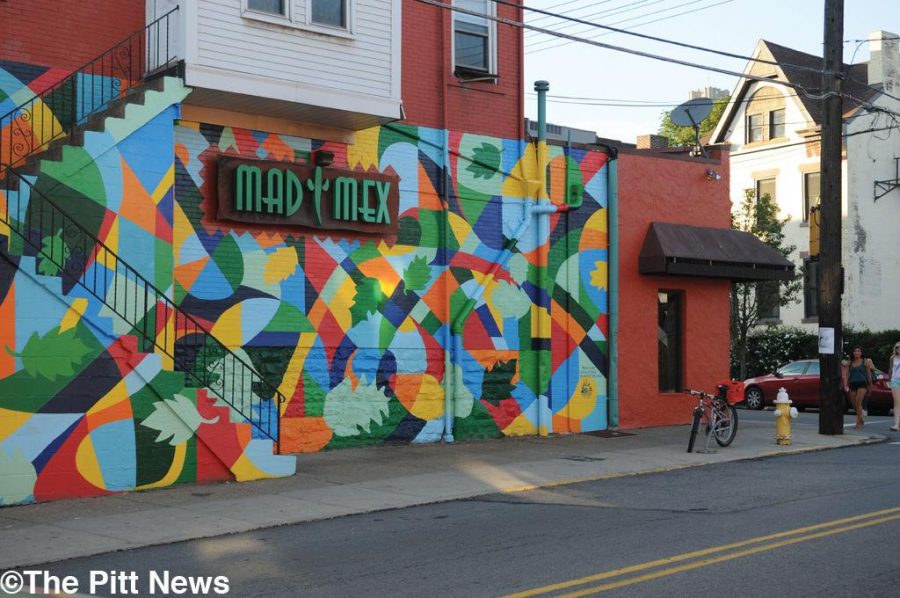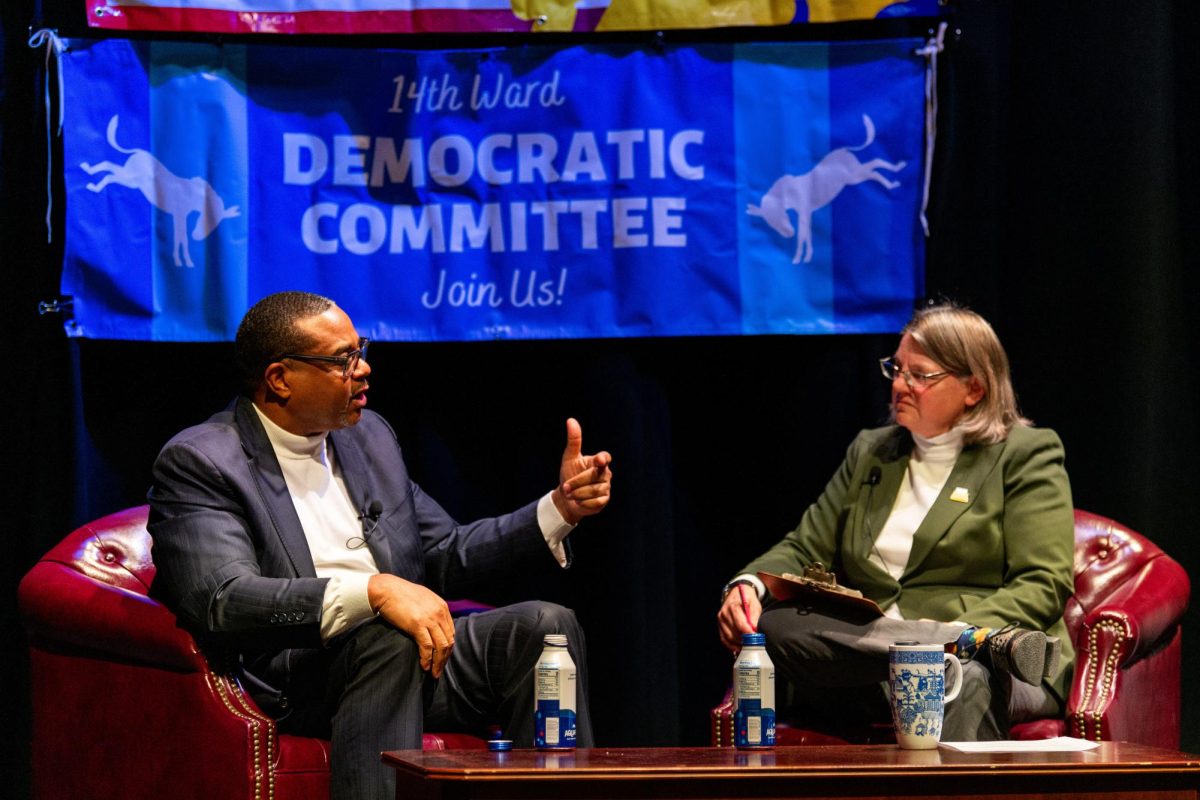MLK Project honors August Wilson, strives to ‘break the cycle’
August 25, 2014
The vibrant painted leaves on the exterior of the Mad Mex in Oakland demand your full attention, but they don’t reveal the scope of the project that brought them to life.
Oakland’s newest mural — designed by Lucas Stock — is a part of Moving the Lives of Kids Community Mural Project’s (MLK Project) summer slate of murals, which also includes large-scale artwork in Squirrel Hill, Northside and the Hill District.
MLK Project was founded in 2002 by Kyle Holbrook, a Pittsburgh native and an Art Institute of Pittsburgh graduate. Its mission is simple: to provide youth from all backgrounds an opportunity to do positive community work while learning the basic fundamentals of art.
The murals are primarily designed by professional muralists, but they’re largely painted by the kids who, in some cases, also contribute design concepts. For the most recent summer program, the youth participants were granted a $1000 stipend from MLK Project.
While the organization is based in Pittsburgh, its artwork isn’t limited to western Pennsylvania. The organization has worked on murals in 15 cities, including locations in Miami, Uganda and Portugal.
Matthew James, MLK’s publicist for the current crop of murals, stressed that, despite its Pittsburgh roots, the organization is equally committed to making a difference in any mural site in the world.
“It’s really all about focusing on the youth there, in that community, and empowering them to be a force for positive change in their community,” James said.
One of the recently completed murals pays homage to one of Pittsburgh’s most well-known and empowering artists — playwright August Wilson. Located in the Hill District, which was the childhood home for both Wilson and Holbrook’s maternal families, the mural illustrates Wilson’s life before winning Pulitzer Prizes, along with some of his most acclaimed plays.
Holbrook taught the kids about many of Wilson’s plays, and the kids contributed to the design, after some additional research on their own.
“Each selected their favorite play. So when it’s all said and done, there’s going to be 10 different renditions of the 10 favorite plays,” Holbrook said.
The idea to also feature Wilson’s work instead of simply his life came from Sala Udin, one of his personal friends and a co-founder of the August Wilson Center. But Udin also provided some unique perspective to Wilson’s life before he was a beloved playwright.
“He just gave me some insight to [Wilson] as a child — him growing up,” Holbrook said. “He also had a real insight from seeing him before he made it, before his first play and then after he was on Broadway.”
Wilson’s tribute began Aug. 8 and is still in progress. “Ghost Whisperer” star and Pittsburgh native David Conrad also joined Holbrook to talk to the kids and kick off production of the mural. But Conrad isn’t the only celebrity connection involved with MLK’s latest project.
Roberto “Max” Maxwell designed the Northside mural, which was completed Aug. 15, and has also designed tattoos for Pittsburgh’s most famous rap exports — Wiz Khalifa and Mac Miller. He’s worked on numerous mural projects in the past, but this is Maxwell’s first project with MLK Murals.
The Northside mural features an evocative mosaic that contrasts positive activities that lead to success with the negative outcomes associated with destructive influences. One of the prominent images is a man behind bars, but surrounding him are positive deterrents that were generated by the youth participants.
“They came up with the ideas from paper drawings — it’s their actual work on the wall,” Maxwell said.
He designed and painted the larger images, which make up a majority of the mural’s upper half, but the kids’ work gives it a baseline from the message’s targeted audience — Pittsburgh’s youth.
Maxwell hopes the mural can encourage positive decisions, evoking the legacy of the activist who shares his initials with MLK Murals.
“It’s something that Martin Luther King Jr. [advocated for] a while ago, which was breaking a cycle,” Maxwell said. “At some point you have to break that cycle — or that’s where you end up.”




